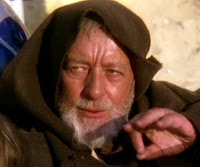 Albert Rasch
Albert Rasch asked in an email: which laptop would I recommend that is rugged and reliable, and with a decent screen? He also asks which Linux I'd recommend for it, assuming that the primary use is basic Internet and multimedia.
I've been pondering this for a couple weeks now, and have finally figured out why: I'm not at all sure about the hardware. Twenty years ago I was immersed in computer hardware specs; now I'm pretty far removed from from the latest and greatest. However, I do have some recommendations I can make, about both.
First, let me recommend
The Register, the online journal about what's happening in the world of IT. I've followed them for ten years, and sharp-eyed readers will remember that I post a lot of links to them. They have a section devoted to
hardware, which is worth your time if you're doing research. I've found them to be reliable, and highly recommend them.
Second, I can describe what I would do - I'd look for a 2 year old IBM/Lenovo laptop. I have a store near me that sells computers that have just come off of corporate lease. You'd be buying down the performance curve, but what you'd get is additional ruggedness and reliability. Back at Big Tech Company, I used IBM laptops for 5 years. Kind of built like a tank, and they offer big screens and especially good keyboards (I view keyboards like I view triggers; mushy action is muy bad). In general used computers are a bad deal. What you will get with this option is a more rugged, lower powered laptop for your money.

Third, you might consider one of the new-fangled Netbooks, like the
Asus EeePC 1000 HA (or even better, the soon to be released 1005, which has a replaceable battery). I haven't tried this configuration, but expect that if you plugged mouse, keyboard, and monitor into the little thing that it would work great, plus would give you outstanding portability if you needed it (although then you'd be using the small 10" screen). I'm actually quite tempted to do this myself.
Want.
The Register has a set of Netbook reviews:
Samsung N120Acer Aspire One D250Asus Eee PC 1008HA SeashellHP Mini 2140Dell Inspiron Mini 12
That's the hardware. The Linux side is actually easy:
Ubuntu.

Now I've been using Linux since kernel 0.99, so I'm no n00b when it comes to building a kernel, installing and configuring X, and all the techie tasks that used to make Linux so (ahem) interesting. Alas, I'm an old grumpy fart now, and can't be bothered. With Ubuntu, I don't have to bother. Everything just works.
To repeat:
everything just works, out of the box.
This is the Linux for my Mom and Dad. If you want a user interface very much like Windows, you might like
kubuntu, which uses the KDE desktop environment. I quite like KDE, and have run it for years, and while I run the base Ubuntu Gnome desktop, I'd recommend KDE as well.

If you want a second opinion for Netbook Linux distrubutions,
El Reg has an exhaustive comparison of the choices.
You'll want 1 GB of RAM, but here's what you get over Windows:
- Fast boot time - at least twice as fast as XP, probably 3 times Vista.
- Free office applications - full power word processor, spreadsheet, etc.
- Multimedia, networking, Firefox, yadda yadda.
- You'll never get a virus or spyware (I know, never say never, but if you keep yourself in Condition Yellow as you surf, you won't get malware).
Here's what you won't get:
- You won't get iTunes. This is a deal breaker for the kids. I expect that a year from now this won't be true any longer - development is moving pretty quickly on Banshee and other iTunes equivalents. They won't download from the iTunes store, but why would you want that when Amazon sells MP3s with no stupid dRM?
- Oh, and the iPhone needs iTunes to configure it, so if you use a Jesus Phone, you're locked into Windows or Mac. I use my work laptop, because it syncs my calendar, so this isn't a problem.
- Games. There are some good Linux ones that come with Ubuntu (for example, FreeCiv), but you won't find first person shooters.
You will need to install MP3 support (well, I did), but it was dead easy - Mom could do it. There's a decent, quick overview of the pros and cons of Linux
here.
So Albert, sorry this took so long, and I hope it helped. Me, I'd go with the eeePC with Ubuntu, and an external monitor, mouse, and keyboard. Your mileage may vary, void where prohibited, do not remove tag under penalty of law.



























